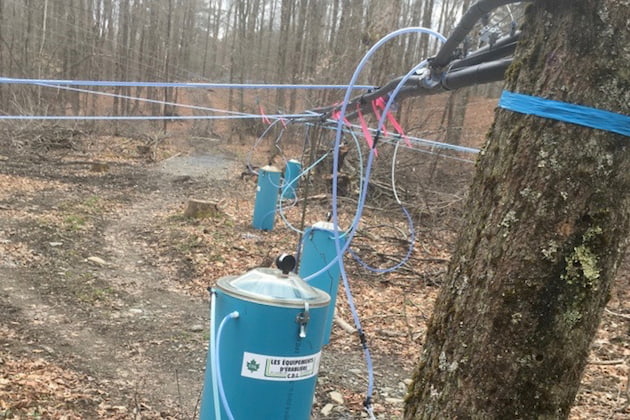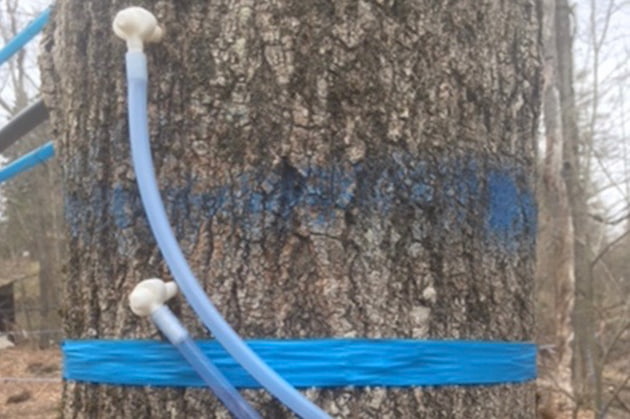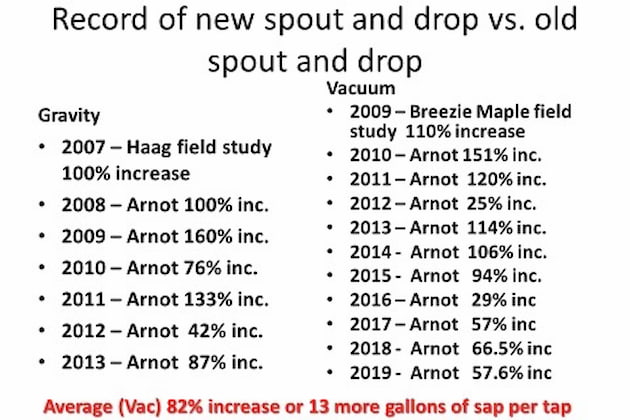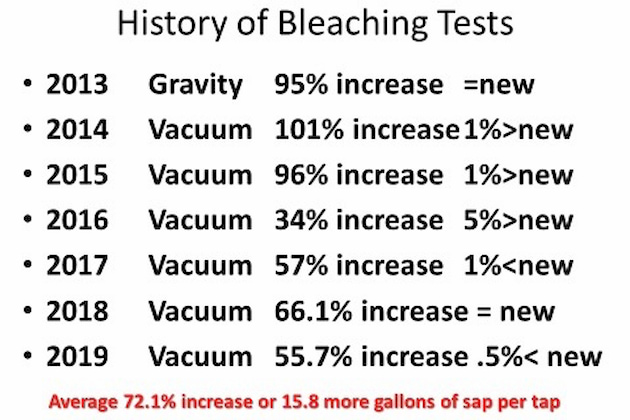Cornell Corner
Bleaching and double-tapping part of maple tubing trials on 5/16 lines from Cornell
Bleaching and double tapping trees part of 2020 study
By STEVE CHILDS, NEW YORK STATE MAPLE SPECIALIST | JULY 13, 2020
VAN ETTEN, N.Y.—During the 2020 maple season five treatments were tested on 5/16 lines at the Arnot Forest Research Forest.
Each treatment was repeated 4 times in the Arnot Forest sugar bush and each of these replications had four taps on a single lateral line.
The first sap runs were recorded on February 1 and the last reading was recorded on March 30.
The treatment used as a check used old spouts and drops where the drop has been used for 8 years and the spout has been in use for 5 years.
Lines had been vacuumed dry at the end of previous seasons when the taps were pulled but received no other cleaning.
The second check for standard comparison is new drops and spouts while the lateral lines were not replaced.
This year the old system yielded 26.1 gallons of sap per tap while the all new spouts and drop system yielded 40.7 gallons of sap per tap representing an increase of 14.6 more gallons of sap per tap.
A treatment was included in this year’s study where the spout and drop were removed from the sugar bush before the season and submersed in a bleach solution of one table spoon of 5.25% sodium hypochlorite in chlorine bleach per gallon of water for 30 minutes followed by through rinse with potable water.
This sanitation treatment was carried out in late January. The drops were then reconnected to the lateral lines that has been in the sugar bush for a number of years with a quick connect fitting.
This year the bleach sanitized spouts and drops yielded 31.6 gallons of sap per tap, 5.5 gallons more sap per tap than the old spout and drop and 9.1 gallons of sap less than the new spout and drop system.
This is significantly less than how this treatment has performed the prior 7 years.
I have no good idea for why this year was less effective.
The last two treatments on 5/16” tubing were re-tap treatments installed with second year laterals, and drops and new silver spouts.
A second new spout, short drop and T were added into the first drop.
It was added directly above, in line with the expected partition zone of the first tap, meaning it is directly above the original tap.
In these treatments rather than waiting until the first tap stopped running to conduct the re-tap, it was added after the temperature had gone above 50 degrees F 4 times after the first spout had been tapped.
In this case the second tap was added on March 16. The reasoning is that by going directly above the first tap it would not be adding significantly to the partitioning in the tree so it would not be reducing the future opportunity for tapping into clean white wood in future years.
Or at least it would be placed where I would not tap again for many years as we are working our way around the tree.
In one treatment the second tap was added just 2 inches above the first and in the second treatment the second spout was added 6 to 7 inches above the first.
The re-tap treatment two inches above the first spout yielded 38.1 gallons of sap per tap, 12 more gallons of sap per tap than old spouts and drops and 2.6 less gallons than the new spout and drop system treatment.
The re-tap treatment 6 to 7 inches above the first spout yielded 48.2 gallons of sap per tap, 14.6 more gallons of sap per tap than old spouts and drops and 7.5 more gallons than the new spout and drop system treatment.
I would appear that 2 inches away from the first tap is not enough to prevent contamination from moving into the new tap hole from the old one.
More variations on this re-tapping idea will be looked at in future years.



































